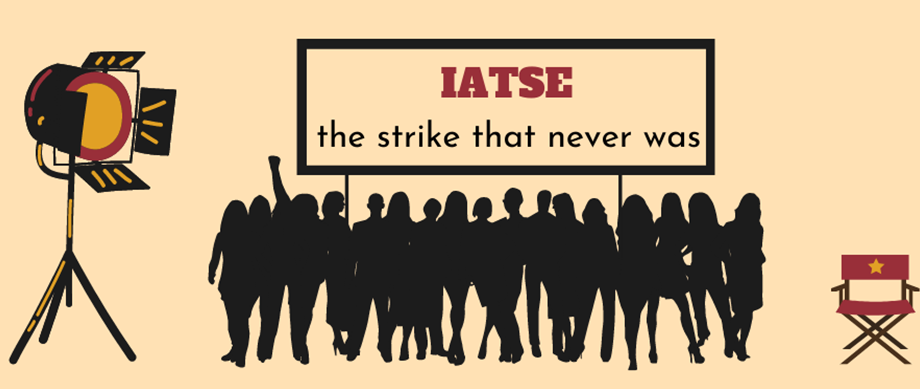Author: Ria Bhandarkar, Graphic: Nina Tagliabue
The BRB Bottomline
While IATSE, one of the largest labor unions in the country, may not officially go on strike, its rising power and successful negotiations may have dramatic effects on workplace conditions in the future. The media attention surrounding the guild indicates that the American labor movement may have rising cultural support.
Although most Americans may not be too familiar with IATSE (the International Alliance of Theatrical Stage Employees, Moving Picture Technicians, Artists and Allied Crafts of the United States, Its Territories and Canada), the works its members do, from lighting in motion pictures to broadcasting sports events, is central to American culture. IATSE is a labor union consisting of multiple locals and divisions and representing tens of thousands of workers.
The COVID-19 pandemic, which shut down nearly every Hollywood production, showed to the IATSE the necessity of improved worker negotiation power and labor rights. Many craftspeople lost their jobs or were put in unsafe conditions. Now, as more and more members return to work, they’re fighting to create a better labor environment on set than before the pandemic.
In early October 2021, over 98% of guild members voted to authorize a nationwide strike in response to studios rejecting proposals to improve safety and promote livable wages. Since streaming services exploded during the pandemic, these negotiations seemed especially timely since streaming platforms have traditionally paid less for craft work than film studios. A small win for the IATSE came in the form of an “area agreement” for about 20,000 workers outside of New York and Los Angeles: increasing wages and paid time off and delaying a potential strike in the near future. A real strike is still up in the air, but, regardless of whether or not IATSE pulls off one of the biggest strikes in Hollywood history, their rising support indicates a major shift in how behind-the-scenes crews will be treated in the entertainment industry.
Recent Developments
While the working conditions of Hollywood crew members may not be the flashiest topic in the entertainment industry, an unfortunate tragedy has put the struggle on the front page. In late October, a prop gun went off on the set of the film Rust, killing the cinematographer Halyna Hutchins and injuring the director Joel Souza. Notably, Hutchins had voiced her support for the IATSE strike prior to her death, and the incident was used as proof that crew and set safety conditions need to be reexamined.
Shortly after the tragedy, IATSE leaders released a statement asking members to remain united and vote yes to ratify “the best possible agreement” in negotiations with Hollywood studios. The contract would increase annual wages and breaks during production. Both of these demands are symptomatic of the hesitation to return to the difficult work days on set after months working from home during the pandemic.
Changing Economic Mindsets
The IATSE members’ concerns aren’t unique to the film industry. In fact, the American economy as a whole has still not reached the levels of employment from before COVID-19 struck due to concerns about wages. At least part of the reason for this phenomenon can be explained by what some economists have dubbed “Striketober”. In October 2021 alone, 10,000 John Deere and 20,000 Kaiser Permanente employees voted to strike. At the same time, industries such as tech, which do not historically organize, led over 40 strikes.
With many Americans laid off during the pandemic or purposefully avoiding employment due to household responsibilities or pandemic subsidy programs, the current minimum wage seems to be proving too low to encourage people to come back to work. While organizing may have had mixed results, the increasing prevalence of strikes like those of the IATSE could have widespread cultural implications. Our relationship to our labor is being transformed globally, and the unrest among IATSE members is not isolated to that industry. More workers were on strike in the United States over the past year than most of the last decade. This unprecedented response and organization amongst American workers could dramatically change workplaces in the future.
Take-Home Points
- Over 60,000 workers in IATSE have voted to authorize a strike if necessary, which would have a major impact on entertainment and broadcasting.
- Even without a strike, its success in major contracts proves that the guild’s power is increasing in Hollywood.
- This is just one example of how unions have grown in influence after the pandemic. This signals a major turning point in the American labor movement.


Superb sitе yоu have here but I was curious about if you
knew of any user discussion forums that cover the same topics talked about here?
I’d really like to be a part of group where I can get
adνice frⲟm οther experienced people that share the same
interеst. If you hаve any suggestions, please let mе know.
Thank you!